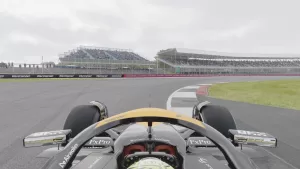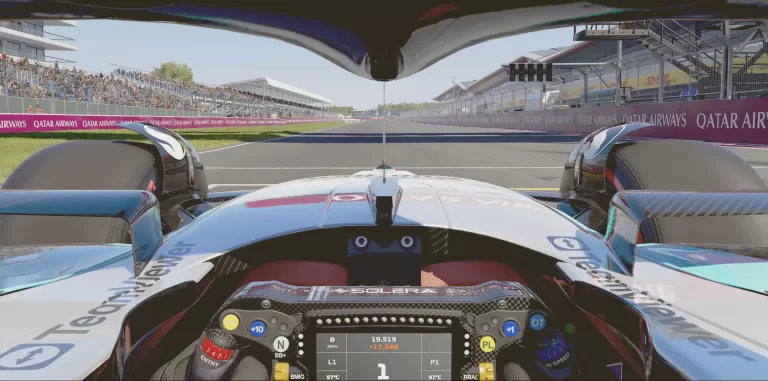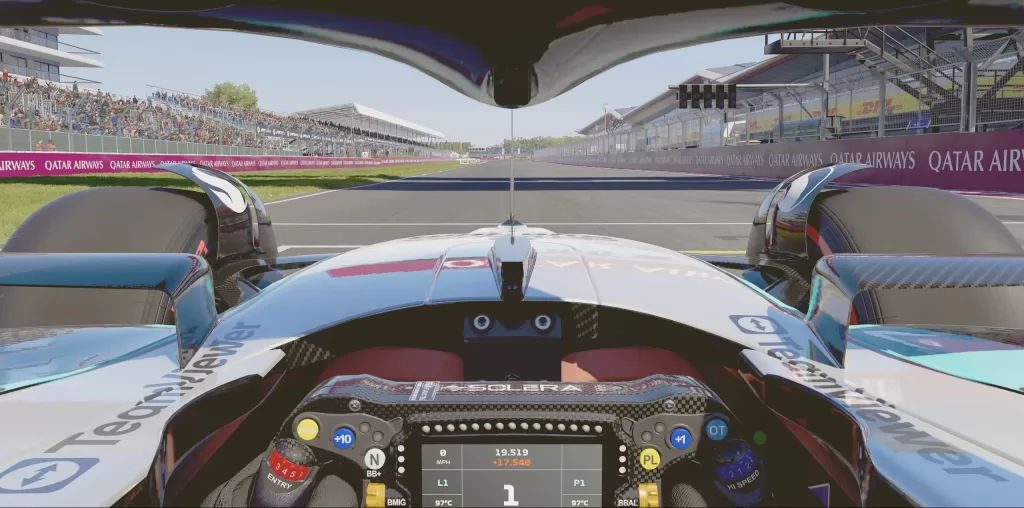Table of Contents
ToggleMastering Basic Techniques for High-Performance Driving.
Driving at high speeds or navigating through a race track requires more than just a heavy foot on the gas pedal. It involves a blend of precision, skill, and a deep understanding of various driving techniques. Whether you are an aspiring race car driver or simply want to enhance your high-performance driving skills, mastering the basics is crucial.
In this guide, we will delve into five fundamental aspects of high-performance driving: understanding racing lines, braking techniques, acceleration and throttle control, shifting gears, and steering techniques.
Understanding Racing Lines
The racing line is one of the basic techniques that every high-performance driver must master. It is the optimal path around a race track that allows a driver to maintain the highest possible speed. Following the ideal racing line ensures maximum speed through corners, better vehicle control, and improved lap times. By mastering this basic technique, you can find the perfect balance between speed and control.
The key elements:
- Corner Entry: The point where you begin to turn into the corner, setting up your approach.
- Apex: The innermost point of the corner, crucial for maintaining speed and control.
- Corner Exit: The point where you straighten out and accelerate out of the turn, completing the manoeuvre.
To find the optimal racing line, approach the turn by positioning your car on the outside of the track. Initiate the turn smoothly, aiming to hit the apex of the corner. As you reach the apex, adjust your steering to follow the curve closely. Gradually unwind the steering wheel and accelerate out of the turn, allowing the car to move towards the outside of the track. Understanding these basic techniques is essential for mastering the racing line.

Braking Techniques
Effective braking is another one of the basic techniques essential for maintaining control and maximizing speed through corners. Proper braking techniques can significantly reduce lap times. Basic techniques in braking include threshold braking, trail braking, and heel-toe downshifting. Threshold braking involves applying the maximum braking force just before the wheels lock up, requiring precise control to avoid skidding. Trail braking is the gradual release of brake pressure as you enter a corner, helping to maintain balance and allowing for a smoother transition into the turn.
In contrast, not using trail braking can lead to understeer and a less efficient cornering approach, costing valuable time on the track.
Heel-toe downshifting is used while braking and downshifting simultaneously, involving the heel and toe of one foot to operate both the brake and throttle pedals, ensuring smooth gear transitions.
To master braking, start by identifying braking points for each corner on the track. Apply brakes smoothly, gradually increasing brake pressure as you approach the braking point. Modulate pressure to avoid locking up the wheels and release the brakes gradually as you turn into the corner, transitioning into trail braking if necessary. These basic techniques in braking are crucial for effective high-performance driving.
When I was learning to master braking techniques and remove ABS assist in F1 games, I experimented with various car settings to aid my progress. One key adjustment was lowering the brake pressure from 100% to 95% to help prevent front tyre locking as I got accustomed to the game’s physics. Additionally, I tweaked the brake bias according to track conditions to optimize braking performance. If the brake bias is too far forward, it can cause front locking. Conversely, setting the brake bias too far to the rear can lead to the rear tyres losing traction under heavy braking, making the car unstable and unpredictable.
These settings vary from person to person and require experimentation to optimize braking performance. Braking is crucial for achieving quick lap times, so it’s essential to find the best setup for your style and the specific sim you are playing. Take the time to experiment and adjust settings to discover what works best for you.
Acceleration and Throttle Control
Throttle control is one of the fundamental techniques crucial for maintaining traction and optimizing speed, especially when exiting corners. Smooth and precise throttle application helps you avoid wheel spin and maintain better control of the car. Key throttle control techniques include smooth application, balancing throttle, and modulating throttle.
Smooth throttle application involves gradually increasing pressure to keep traction and prevent wheel spin while balancing throttle requires small adjustments during cornering to maintain stability. Modulating the throttle, on the other hand, adjusts pressure to manage weight transfer and ensure a steady, stable exit from the turn.
When throttle input is too aggressive or abrupt, it can cause significant issues like wheel spin and oversteer, leading to loss of control and slower lap times. Poor throttle control compromises traction and makes the car unstable through corners and on the exit.
To improve throttle control, start by practising smooth and gradual throttle application at lower speeds. Focus on feeling the car’s response to throttle inputs and work on maintaining a balanced throttle through corners. Over time, these refined techniques will help you achieve quicker and more stable lap times.
When I was honing my throttle control skills in F1 and transitioning from traction control to manual control, I discovered a couple of invaluable techniques and settings. First, I added a slight throttle dead zone of around 15%, which helped me modulate the throttle more precisely, especially since I tended to apply too much pressure at first. As I became more comfortable with the game’s mechanics, I reduced the dead zone incrementally.
In terms of car settings, adjusting the on-throttle differential to 50% improved traction out of corners by allowing each rear wheel to rotate at different speeds. I also increased the rear downforce by modifying the rear wing, which stabilized the car during hard acceleration. These adjustments not only improved corner exits but also allowed for quicker acceleration back to full power, ultimately leading to faster lap times and better performance.
Shifting Gears
Efficient gear shifting is among the basic techniques that ensure the engine operates within its optimal power range, maximizing acceleration and speed. It also helps maintain vehicle stability and control. Basic techniques in gear shifting include upshifting and downshifting. Upshifting involves changing to a higher gear as the car accelerates, keeping the engine within its power band. Downshifting involves changing to a lower gear when decelerating or preparing for a corner, providing better engine braking and control.
Advanced gear-shifting techniques include rev-matching and heel-toe shifting. Rev-matching adjusts the engine speed to match the wheel speed during downshifts, ensuring smooth gear transitions and avoiding drivetrain shock. Heel-toe shifting combines braking and downshifting by using the heel and toe of one foot to operate the brake and throttle pedals simultaneously.
To master gear shifting, focus on making gear changes smooth and precise. Practice rev-matching to ensure seamless downshifts and integrate heel-toe shifting with braking for more efficient deceleration and cornering. These basic techniques in gear shifting are fundamental for high-performance driving.
Steering Techniques
Effective steering techniques are essential for precise control and manoeuvrability. Proper steering ensures smooth and fast cornering while maintaining vehicle stability. Basic techniques in steering include maintaining the correct hand position, applying smooth inputs, and counter-steering. Apply steering inputs smoothly to avoid upsetting the car’s balance and adjust the steering in the opposite direction of a slide to regain control.
Advanced steering techniques include shuffle steering and one-handed steering. Shuffle steering is used in tight corners where the hands “shuffle” on the wheel to maintain control, while one-handed steering is occasionally used in specific situations where rapid steering adjustments are needed.
To master steering, focus on smooth steering inputs to maintain vehicle stability and develop the skill to quickly counter-steer in case of oversteer or understeer. These basic techniques in steering are critical for high-performance driving and will largely depend on the racing sim you placing on.
Integrating the Techniques
Mastering each technique is crucial, but integrating these basic techniques seamlessly is what makes a proficient high-performance driver. Here’s how to combine these techniques effectively:
Approach a corner by positioning the car on the outside, ready for turn-in. Apply threshold braking as you approach the corner, transitioning to trail braking. Downshift smoothly, using heel-toe shifting if necessary. Initiate the turn with smooth steering inputs, aiming for the apex. Gradually apply throttle as you exit the corner, maintaining traction and balance.



Cockpit View for Technique Mastery
Using the cockpit view in F1 games can significantly enhance your ability to master high-performance driving techniques. This perspective varies slightly from car to car but consistently provides an immersive experience that maximizes your enjoyment and focus. The feeling of being in the car gives a greater sense of realism, leading to a better understanding of how braking techniques, throttle control, and steering inputs affect the car.
By fixing the steering wheel animation, you can rely on the on-screen display for quick and easy access to telemetry data, helping you fine-tune your techniques, I have always found the steering motion off-putting so I always choose to turn the animation off. In a later blog post, I will delve deeper into camera settings to further optimize your racing experience.

Continuous Improvement
To become a proficient high-performance driver, spend time on the track practising these basic techniques in various conditions. Use data and video analysis to review and improve your driving, Track Titan offers superb telemetry to be able to perfect your racing performance. Click here to check out my review of Track Titan.
Conclusion
Mastering high-performance driving requires a blend of skill, precision, and continuous practice. By understanding and integrating the basic techniques of racing lines, braking, throttle control, gear shifting, and steering, you can significantly enhance your driving performance. Remember, the key to becoming a proficient driver is not just learning these basic techniques but practising them consistently and refining your approach. Whether you’re on the track or navigating through challenging roads, these fundamentals will provide the foundation for safe and exhilarating driving experiences.

